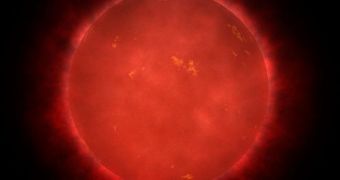As the search for alien planets intensifies, astronomers are working hard on determining what the best hunting grounds for such objects may be. From available data, they were able to infer that red dwarf stars may be prime candidates for hosting Earth-like planets in their orbit.
If that turns out to be the case in reality, it would imply a considerable boost for the field of exoplanetary research. Red (M) dwarfs are the most common stars in the Universe. They make up for about three quarters of all the stars in the Milky Way, experts say.
Thus far, we have been able to identify and confirm more than 500 exoplanets throughout the Universe. On February 2, NASA announced that its Kepler planet-hunting telescope has seen some 1,235 planetary candidates, of which about 80 percent stand a chance of being confirmed.
As such, it's becoming clear that there is no shortage of exoplanets out there. But what astronomers are really looking for is the Holy Grail of astrobiology, an Earth-analog planet. This means an object orbiting in its star's habitable zone, that is rocky, and that has a mass and size comparable to Earth's.
But chances of finding such bodies are relatively small because they are very rare. Of the 1,200+ planets Kepler found, only a little over 50 were orbiting in their stars' habitable zones, and none of them were comparable to Earth in density, mass, size or other important reference points.
For some reason, astronomers believe that M dwarf stars are the most suitable places to investigate for alien Earths. These objects are smaller than yellow dwarfs such as the Sun, as they have masses between one twentieth and half that of our star.
While they may be dimmer and cooler than the Sun, these stars live for longer periods of time. It is estimated that they contain enough fuel – and that they burn it at a low enough rate – to keep the object going for 40 to 100 billion years.
As such, on any planet that exists around such a star, lice potentially has a very long time at its disposal to evolve. Earth needed only a couple billion years to develop the earliest lifeforms, so image what type of civilizations could exist in space after 10 billion years of evolution.
Exoplanets located in the habitable zone of red dwarfs would finish a single orbit in a year lasting for only about two weeks. This zone is very close to the surface of such star, as they are dimmer than the Sun, Daily Galaxy reports.
“Overall, this is excellent news for planet hunters. This further buttresses the case that the first truly habitable world we find will likely by around a nearby M dwarf,” says Carnegie Institution for Science planetary scientist Alan Boss.
He is a member of the Kepler team that announced the discovery of the new exoplanets, but he was not a part of the red dwarf study.

 14 DAY TRIAL //
14 DAY TRIAL //